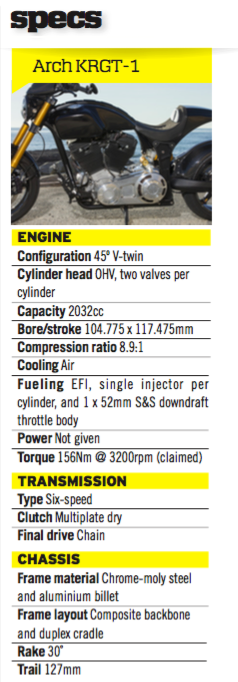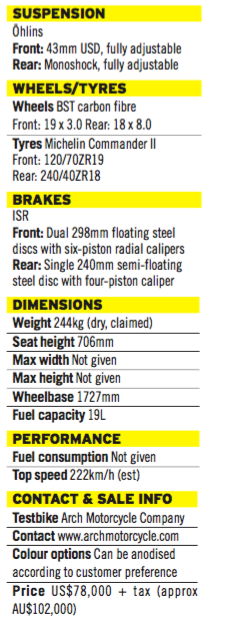Hollywood actor Keanu Reeves has taken his love of bikes to the next level – by manufacturing this all-American V-Twin
Motorcycles are once again a must-have accessory for Hollywood’s rich and famous, even if there are few movie stars sufficiently expert at actually riding them to perform their own two-wheeled stunts on camera, as Tom Cruise has apparently done on the various episodes of the Mission Impossible franchise.
But there’s one box office bigtimer about to turn 52 for whom motorcycles are a way of life – all the more so as since 2011 he’s been the co-proprietor of his own motorcycle manufacturing company, Arch Motorcycle in Hawthorne, California, point zero for the Los Angeles custom car and bike culture. For in spite of being a Hollywood A-lister for the past three decades, Keanu Reeves, star of The Matrix, Speed, Point Break and numerous other box office hits besides Bill and Ted’s Excellent Adventures which shot him to stardom back in 1989, rides a bike everywhere and anywhere 24/7. In doing so he’s suffered his fair share of injuries, including a ruptured spleen, some broken teeth, and both arm and leg fractures – mostly lowsides that he’s humble enough to admit came from rider error in the course of covering hundreds of thousands of miles on two wheels down the years. Like when legend has it that he rode his Norton across the USA from Canada to Florida in 1990 to hand deliver the script for My Own Private Idaho to his co-star in that acclaimed movie, River Phoenix, after River’s agent refused to show it to him. As in, why fly when you can ride – right?
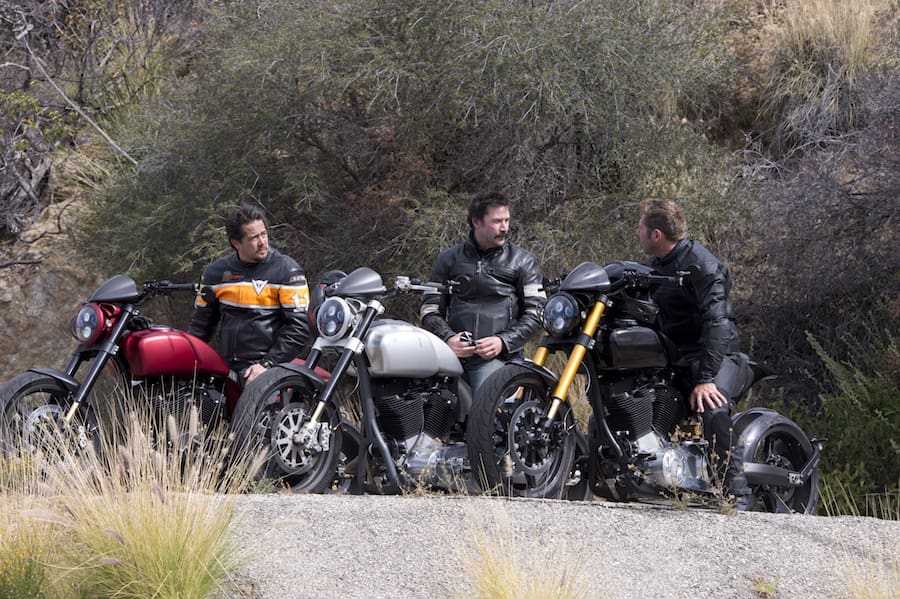
When he’s away from his Los Angeles base shooting a movie on location, Keanu’s regular custom is to purchase a bike locally he can ride for the duration of the shoot, then sell it back to the dealer when filming is over. Such “Ex-Keanu Reeves” highlights of the local secondhand marketplace have included everything from a 1978 Moto Guzzi T3 to an ‘88 Suzuki GSX-R750, and from a Harley Shovelhead to a Kawasaki KZ900 and Suzuki GS1000. When he went to Australia to shoot The Matrix he got a 750 Norton, and then for the second Matrix sequel a Harley Sportster. But back home in California Keanu’s Hollywood Hills home has a garage housing four Norton Commandos of different vintages which are the keystones of his two-wheeled collection, with occasional Harleys that come and go while the Nortons stay put. It was in sourcing a cissy bar and throne seat for a half-finished Harley Dyna he was customising that in 2006 Keanu met up with Gard Hollinger, then proprietor of top Custom bike house LA County Choprods, and a veteran of TV shows shown worldwide, like Discovery Channel’s Great Biker Build Off, ESPN’s Chopper Nation and Speed TV’s Build or Bust. The two became friends, and Reeves commissioned Gard to build him a Custom hotrod based on the Dyna, only he had very specific ideas about how it should turn out, in creating what pretty much amounted to an American V-twin powercruiser version of his Norton Commandos.
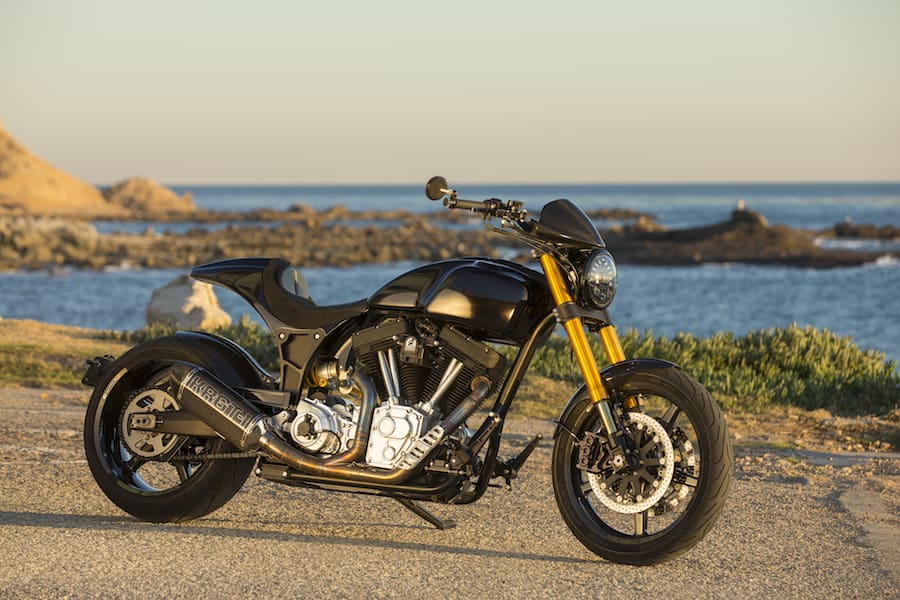
With Keanu out of town shooting his next movie, it was Hollinger, 57, who took up the story when I visited the restored 1950s brick-built 10,000ft² Arch factory in suburban Los Angeles – lined with his collection of vintage dirt bikes, as well as a slightly improbable array of oil paintings by Colorado-based artist Stefan Kleinschuster – to see for myself how excellent an adventure Keanu and Gard were actually having, and to ride the fruits of their joint venture. “That first Dyna custom motorcycle project took quite a while to complete, mostly due to Keanu’s work schedule, because he needed to evaluate it as it came along,” says Gard. “It was the first time I’d built a motorcycle that way, where the customer had very specific ideas about what he wanted it to do. During that process Keanu started to say, maybe we could build some more of these for sale – but I would always say ‘why don’t we finish this one first, and then talk about it’! But when the bike was done, with all the years of riding motorcycles that I had, and the many different bikes he’d ridden, we were both very taken by the experience of riding this big American V Twin that was light but torquey, and could handle really well even though it had a fat rear tyre on it. It was beautiful to look at in a futuristic yet classic sort of way, so then when he brought up this idea for the third or fourth time about teaming up, I started to be more be open to it.” But this was 2011, the country was in recession, and most of the clone manufacturers small and large had gone bust. Was now a good time to become a motorcycle manufacturer?! “I spent several weeks being a firewall,” admits Gard, “and then when we got together one night to have a real discussion about it over dinner, after being in the industry for quite a few years I had a laundry list of reasons why we shouldn’t do it – the recession being one of them.”
But Keanu Reeves’ enthusiasm for the project – plus, no doubt, his deep pockets, meaning he was able to provide the $$$ in necessary startup capital – meant Hollinger’s reluctance was overcome. “What really ultimately turned me around, besides the passion that Keanu has for motorcycles in general and for doing this project, was when I asked him to give me the No.1 reason that he had for wanting us to do this. He said, “Someday we aren’t going to be here, and if we have the opportunity to leave something behind that we care about, we should do it. “ So call it a legacy moment – but why Arch Motorcycle? “We bandied about a huge list of potential names, and weren’t happy with any of them,” says Gard. “We were having another one of our now infamous dinners, and midway through the evening Keanu says “Arch, Arch Motorcycle!” He started to explain that an arch is this very strong structure, and the idea of an arch in a doorway or a bridge is that besides its strength it also connects things, and provides a creative passage underneath. So Arch it was – and I also liked it because it’s a nice four-letter word that you can do fun things with graphically!”

Launched at the beginning of last year, Arch’s debut model carrying the KRGT-1 designation and costing a hefty $78,000 + tax is a feet-forward powercruiser that looks pretty much unlike anything else currently available in the high-end Custom marketplace. That’s partly because, rather than the increasingly ubiquitous S&S Cycle triple-camshaft X-Wedge engine, it’s powered by the Wisconsin-based engine supplier’s clone of the older-style air-cooled Harley-Davidson Twin Cam 45º V-twin motor, in this case its 124ci/2,032cc variant measuring 4⅛ x 4⅝ inches (104.775 x 117.475 mm), and fuel-injected via an S&S ECU, with a single injector per cylinder. Like Harley, Arch is today coy about quoting horsepower numbers, though it feels when riding it like the KRGT-1’s output is in the 105-110bhp range – Gard Hollinger says the surprisingly specific 121.53 bhp figure Arch quoted to the US press at the model’s debut last year was ‘incorrect’. But what matters far more out in the real world is the meaty 115.31ft-lb/156Nm of torque it officially delivers at 3,200 rpm. The reduced power output is almost certainly because, since Arch’s February 2015 press launch, the bike has gone through EPA/CARB certification – it’s now 50-state legal in the USA, so Euro 3 compliant too.
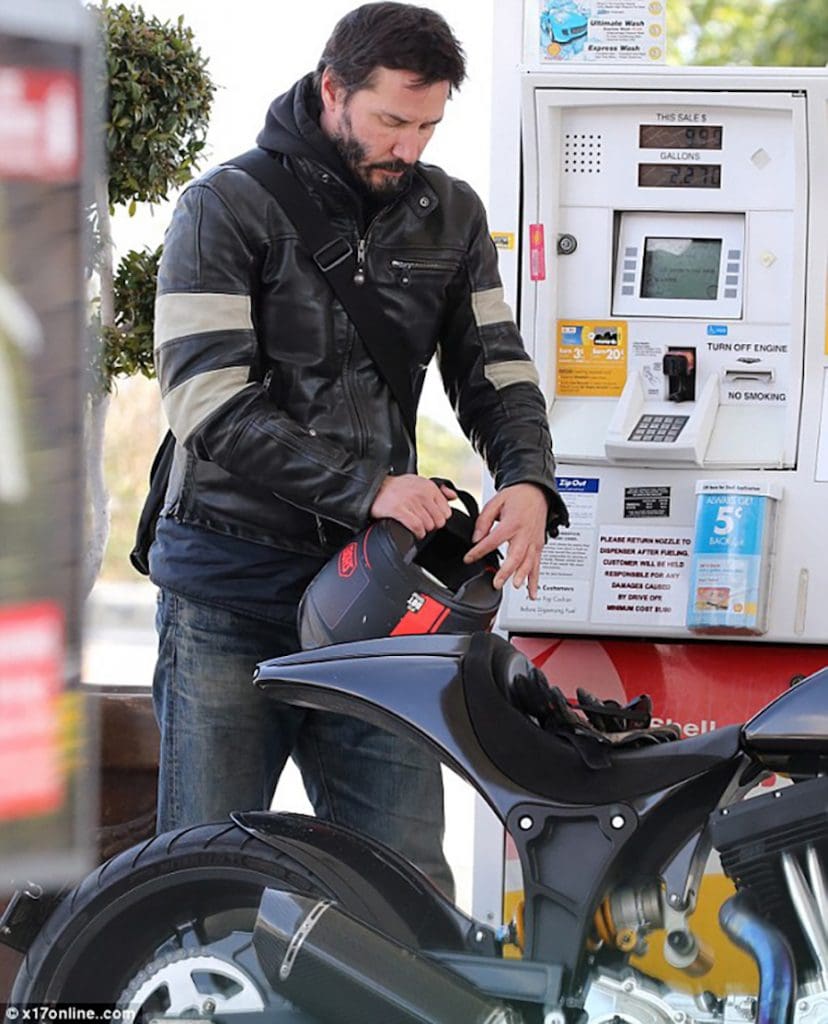
Transmission consists of a Baker Drivetrain 6-speed gearbox combined with a Bandit dry clutch and belt primary, although as you’d expect for a performance hotrod like this, there’s a 530 O-ring final drive chain rather than a belt on the right side of the bike, driving the rear South African-made 18-inch BST carbon wheel, whose 8.00in rim carries a massive 240/40ZR Michelin Commander II tyre, matched to a more rational 120/70 front on a 3.00 x 19 inch wheel. The H-D Dyna-engined prototype apparently carried a 210-section rear tyre, but this was unavailable in the Michelin catalogue, so having settled on the French company as its tyre supplier, Arch defaulted to the 240/40 rear rubber.
That Dyna-engined prototype had two drawbacks that needed fixing – its fuel tank was too small, and the unsightly air cleaner protruding out to make friends with your right knee as on most Harleys and clone motors, annoyingly impeded legroom. This was resolved by S&S designing a centralised downdraft feed exclusively for Arch for the single 52mm throttle body, yet without requiring new cylinder head castings, according to Hollinger. “Oddly enough, it needed only some very minor tweaks to accomplish this,” he says. “As is often the case if you get some really brilliant engineers involved, it ended up really being quite simple, entailing just repositioning and slightly repurposing many parts that already existed.” If it’s that straightforward, it makes you wonder why Harley don’t do it, too….
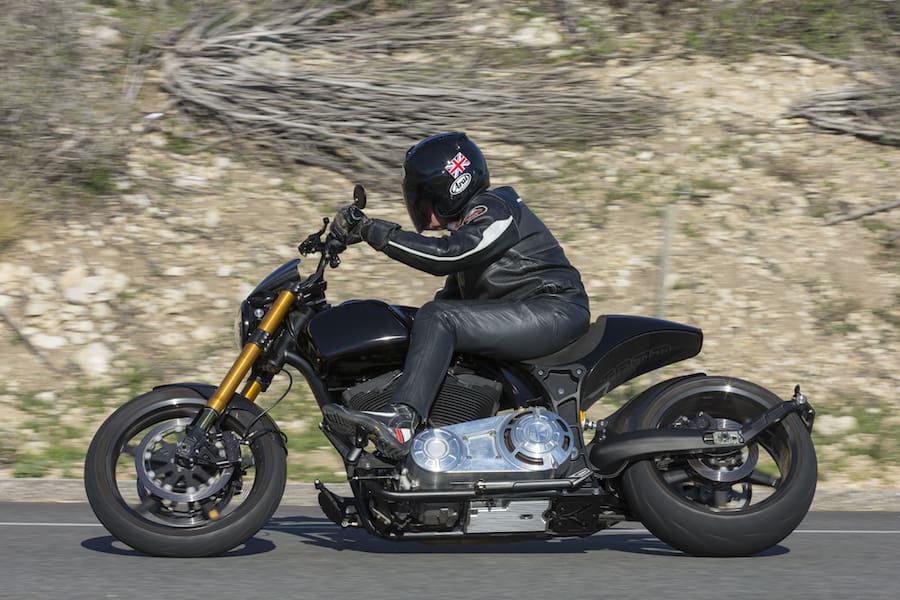
Arch’s new downdraft induction system delivers a claimed 40% increase in volume over a typical side-induction system, and sees the throttle body (surmounted by a K&N airbox and filter) positioned between the two halves of the gas tank, thus leaving space in between for cool air to be directed towards the intake via cleverly placed ducting incorporated into the headlamp shell. The two tanks have no less than 66 hours of machining in them to reduce a pair of 260lb/118kg aluminum billets to the two 9lb/4kg fuel cells that are then custom-finished and linked by a connecting tube. These carry a combined total of five US gallons/19lt for a range of around 200 miles/320km. The right side tank’s interior is reinforced for it to act as a structural chassis member once it’s bolted into place, in combination with the composite frame’s chrome-moly tubular steel single-loop backbone frame with bifurcated downtubes morphing into a duplex engine cradle, which itself is bolted at the rear to the twin machined aluminium billet plates acting as rear chassis uprights.
The beautifully made aluminium swingarm is also constructed from billet – taking another 17 hours of machining to extract that from solid metal – and comprises five separate pieces which are shot-peened and anodised before assembly into an 18lb/8kg component with titanium adjusters and a hollow chrome-moly steel axle. The swingarm pivots in those rear chassis plates, and operates the fully-adjustable piggy-back reservoir cantilever Öhlins monoshock directly, without benefit of a link. Up front there’s a 43mm Öhlins fork, naturally again fully adjustable, housed in triple clamps (machined from billet in-house, of course) fitted with a steering lock, and set on this bike – which doubles up as the road test mule and Keanu’s personal mount when he’s home in LA, as well as his mount at the Goodwood Festival of Speed [see interview]) at a lazy 30º rake, with 5.0in/127mm of trail, resulting in a rangy 68in/1727mm wheelbase.
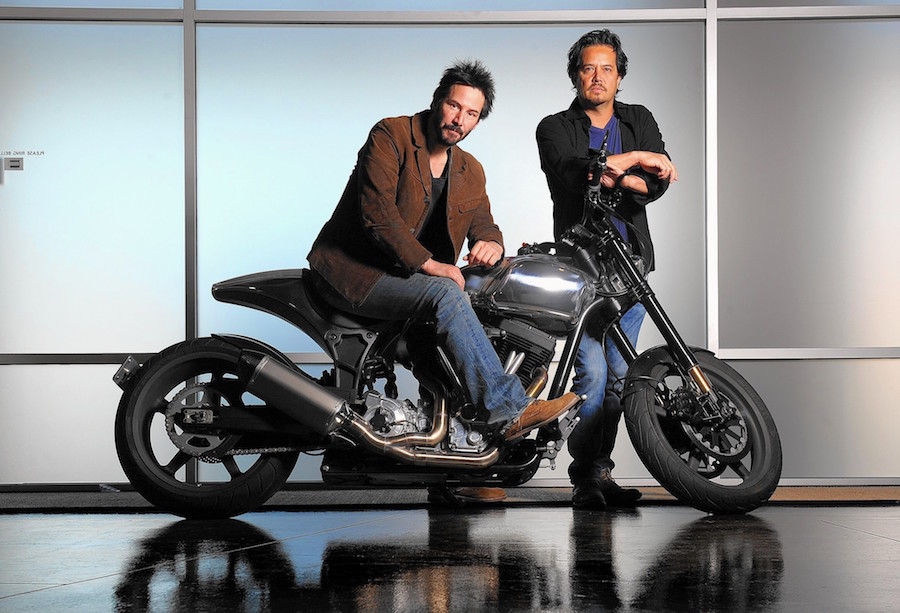
HAWTHORNE, CALIFORNIA OCOTBER 29, 2014-Actor Keanu Reeves, left, and Gard Hollinger have teamed to create Arch Motorcycles, makers of high-performance, and very expensive, motorcycles in Hawthorne. (Wally Skalij/Los Angeles Times)
Gripped by the two lower frame rails is a dual-purpose thin, flat, hollow, billet aluminium tray comprising the oil tank for the dry sump engine, which also supports the gearbox housing. Behind this is the lithium-ion battery pack cartridge whose housing also acts as a chassis crossmember. Removing three bolts with the bike on its side stand, and then disconnecting the battery terminals, allows the whole cartridge to drop out for easy access. The oil tray results in a light, almost airy look to the engine compartment and thus the bike as a whole, that’s quite distinct from the more muscle-bound appearance of comparable Big Twins. The KRGT-1 weighs in at 538lb/244kg dry, split 50/50 front and rear, and is stopped by very effective but not over-aggressive Swedish-made ISR 6-piston radially mounted Monoblock front calipers gripping twin semi-floating 298mm ISR discs via a radial master cylinder, with a four-pot rear caliper and 240mm disc.
Arch’s bevy of CNC machines run 12 hours a day, six days a week, and the copious number of KRGT-1 components CNC-machined in-house from solid billet seems practically endless. “We buy aluminum for $3 a pound, and sell the scrap for 50 cents,” jokes Hollinger. “We sell a lot of scrap.” He says that Arch chooses the aluminum-billet material because it’s light, it’s stronger than casting the parts, and it enables an almost unlimited choice of shapes than can be subtly altered in the course of production.
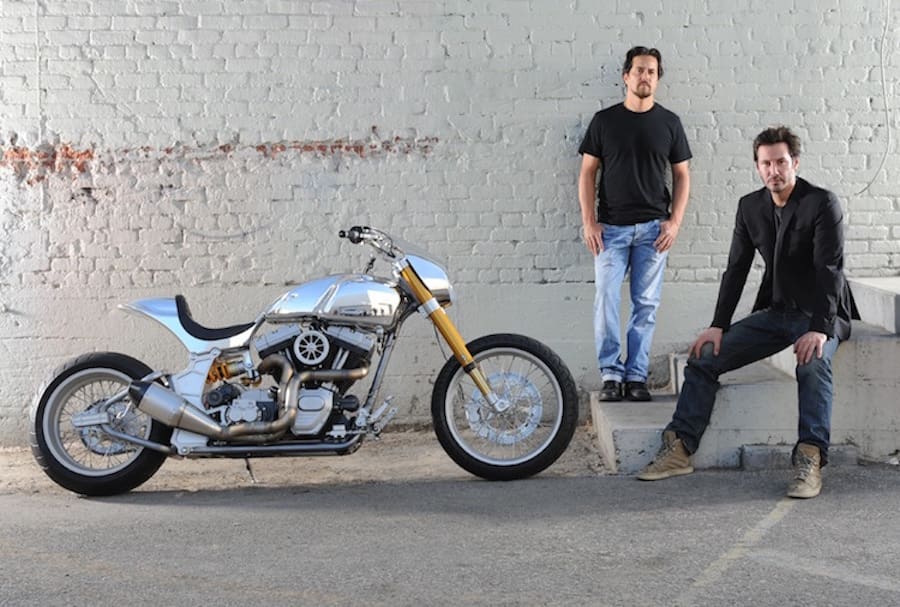
There are more than 200 billet aluminum parts in all in the bike, collectively representing 300-plus machine-hours of CNC and water-jet machinery time per motorcycle. These include not only the gas tanks, but also the headlight housing, the gracefully curved solo seat pan-cum-rear mudguard, and the housing for the cove-style reflective inverted LED taillight, which sits hidden within the aluminium rear cowling, eliminating the need for traditional plastic lenses. The solid billet primary-drive cover started life as a 75lb/34kg block of aluminum that got machined away until this lovely metal structure emerged. All can be anodised any colour the customer wants – though strangely there’s no Arch badge or brand name on the bike, nor any sign of the KRGT-1 model designation anywhere except for small stickers on the dash, presumably in the interests of subtle anonymity. So much for Gard’s fun graphics!
There’s a choice of two- or three-inch risers for the short, quite flat Rizoma taper-section handlebar, as well as narrow or wide-mounted footpegs, and forward or mid-set controls, all again machined from billet. This is a bespoke-built bike that can be tailored to fit Sir – or Madam – like a Savile Row suit. The wheels are only the most obvious of the many carbon parts on the bike, all of them produced by BST, including the carbon end cap and silencer wrap for the upswept 2-1 exhaust made in-house by Arch itself using Yoshimura internals, while besides the handlebar Rizoma also provides various other high-end bolt-on components, like the very effective bar-end mirrors. The 78 grand US ticket price for ownership of all this is a steep one – but just casting an eye over the KRGT-1 soon makes you realise the justification for it. Not only is every component the absolute best available to do the job, but the quality of construction and finish is superlative – especially with so much machined from solid in the Arch factory. This is the US Big Twin equivalent of a Bimota or Brough Superior, comprising top drawer design and outstanding execution. Gard reveals that Arch just satisfied its 19th order for such a bike, with deliveries so far to customers in Malaysia, Russia, Australia and throughout the USA, with the current delivery schedule about 90 days from receipt of a $15K deposit.
Time to throw a leg over this understated-looking but finely detailed modern-day powercruiser, which has genuine presence when you see it in the metal – it looks sleek yet substantial, aided in part by that stretched out wheelbase, the slender curved rear bodywork, and the downdraft intake conversion which means the entire bike is no wider than the rear tyre when viewed from behind, save for the primary drive. So it feels slim and practically sprightly by Big Twin standards as you snuggle into the 27.8in/706mm high seat. Doing so makes you aware you’re sitting deep within the KRGT-1 so you feel very much a part of it, not perched on top of some minimalist pad with the potential to jar your spine every time you go over a bump in the road thanks to the limited wheel travel available from a pair of vintage era shocks, that’s sure to deliver numb-bum syndrome in just a few miles. On the Arch motorcycle you’re nestling instead aboard a well-padded seat which is undoubtedly the most comfortable cruiser chair I’ve yet sat on/in – I could imagine covering heaps of miles on this without getting uncomfortable. The way your legs are stretched quite far forward is also pretty untiring, with well-placed indents in the fuel cells for my knees, and the flat Rizoma ‘bar is nicely pulled back just enough to deliver a reasonably sporty but still relaxed stance by US cruiser standards.
Thumb the starter and relish the rorty exhaust note that’s actually relatively muted by aftermarket Harley standards when you blip the throttle, noting however the pretty serious vibration at the 1,000 rpm idle speed. But then when you click bottom gear on the slightly stiff-shifting Baker gearbox (but there’s a light, easy lever action for the Bandit clutch, in spite of all the torque it has to hardness), the vibes vanish as if by magic as you make motion. They only reappear if you rev out the S&S 124ci motor to anywhere near its 5,800 rpm revlimiter, which you have no right ever doing with the six-speed transmission aboard to ensure you surf the engine’s massive reserves of torque as a matter of course. Do that, and you’ll be glad the Arch has such a rangy wheelbase to help keep the front tyre on the ground as you hurtle forward in frankly thrilling, highly enthralling manner. Work the motor’s 1,500-3,500 rpm happy zone, and the KRGT-1 delivers absolutely enticing performance both smoothly and immediately – the S&S ECU has well-mapped fuelling that doesn’t deliver a brusque response from a closed throttle exiting a turn, yet has smooth but vivid part-throttle pickup with no undue vibration. Just make sure you’ve shifted up before those big 1016cc cylinders start tingling again at 4,000 revs, and on no account go any higher than 4,500 rpm, when the jackhammer vibes become deeply intrusive in spite of the motor being rubber-mounted at the front – but bolted firmly to the frame at the rear, plus the rear cylinder head is attached to the backbone frame via bushes. It vibes badly if you rev it out.
A three-speed gearbox would be sufficient on the Arch because of the incredible torque figures between 2,400-2,600 rpm where torque climbs from 60 to 110 ft-lb in only 200 rpm! When cruising at 60mph/100kph in sixth gear on the KRGT-1 after you short-shifted to get there, you’ll see just 2,200 rpm displayed on the only really naff item on this beautifully made bike, which is the MotoGadget instrumentation with its red-on-black LED matrix display that looks frankly vintage and is confusing to read, plus the analogue tacho only reaches halfway across the dial because of the Big Twin motor’s low revs. What this bike deserves is a much classier full-colour TFT dash as found on most other high-end bikes today, just maybe not Custom bikes, even performance ones. Also, there’s no gear-position indicator, which you really need for something this torquey – it’s very easy to get lost in the gearbox, and thus search for a non-existent seventh gear. Even without going TFT, MotoGadget make top analogue dials, and that’s at least what Arch needs to fit.
I’ll admit to being surprised how well the KRGT-1 handled, given its rangy geometry and especially the long wheelbase and that design statement of a fat rear tyre on which I actually surprised myself by using all but a tiny chicken strip of the tread without decking either my heels or even the footrests, once I remembered to put my toes on them. Only the exhaust touched down lightly, which is a compliment to this bike’s well thought out architecture. It was the first time I’d ridden on Michelin’s custom tyre, which has a rounder shape than many of its competitors, so it doesn’t suddenly fall on its side when you reach the edge of the shoulder as on some rivals’ flatter designs. But the key to making the Arch handle is to make sure you power it round turns on the gas, otherwise if you back off halfway round, it’ll immediately start pushing the front in a display of terminal understeer. Get back on the throttle again, though, and it’ll tighten its line, taking you where you wanted it to go. Sure, you can cruise gently round turns with a good deal of nonchalance – it’s only when you start going for it as the Arch motorcycle’s taut, seemingly stiff chassis urges you to do, that it starts to get out of shape without a firm hand on the twistgrip – and that’s only because of the geometry. Gard Hollinger says Arch is working on a bike with much tighter numbers – a 26º head angle and much less trail – and that might improve matters. But once you get used to how it likes to be ridden, it’s no problem.
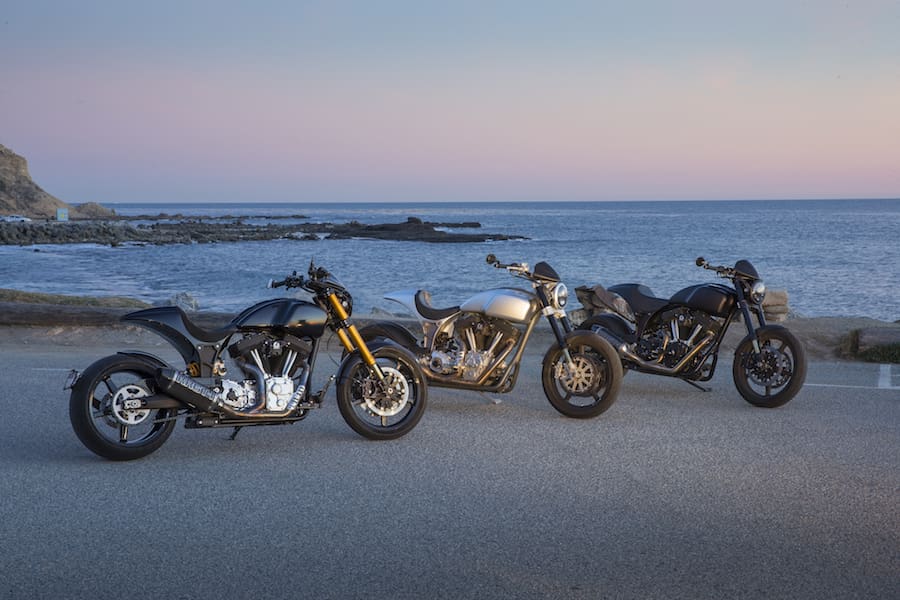
For the KRGT-1 has pretty exemplary handling by powercruiser standards, partly thanks to the Öhlins suspension which especially at the rear gave surprisingly good ride quality – certainly better than a typical Custom bike. That’s even with that heavy doughnut of a rear tyre fitted – although the featherweight BST carbon wheel must offset a good bit of that in reducing combined unsprung weight. However, where the Arch absolutely 100% comes into its own is in city traffic, where it’s King of the Streets and all others must pay allegiance to it. Riding back through the streets of LA in gathering twilight after a day spent carving corners in the canyons surrounding the city was a magical experience, staging Gard Hollinger on his sister bike at each stop light, taking no prisoners with any Porsches that wanted to play – one did, and he was soon history! – and generally living it up aboard what is a taut, integrated and refined set of performance wheels in a Muscle Beach powercruiser kind of way
As it should be for that money, I hear you say. Well, OK – but just remember the Bimota comparison. This is a big American V-twin cruiser that can handle the canyons and twisties very capably, as well as boulevarding with the best of them – it bridges the divide between Custom cruiser and sportbike very nicely. Wonder if that price tag includes Keanu’s autograph on the gas tank, though?

Q&A KEANU REEVES
The chance to catch up with Keanu Reeves after missing him when I visited the Arch Motorcycles facto-ry in Los Angeles to ride the bike that he and business partner Gard Hollinger had created, came a few weeks later when we found ourselves pitted right next to each other for three days at the Goodwood Festival of Speed.
That’s the annual three-day mid-summer Motoring Garden Party built around a high-speed hill-climb held over the 1.16 mile/1.87km driveway leading to Lord March’s stately home close to the sunny south coast of England, the historic Goodwood House built in the early 1600s. It’s a big deal, with last year’s star attraction being Valentino Rossi, making his Goodwood debut riding a YZR-M1 Yamaha the day after his dramatic GP Assen victory on a similar bike. But this year in Vale’s absence the star guest was … Keanu Reeves.
At Goodwood Keanu was riding the very same all-black KRGT-1 Arch Motorcycles test bike that I’d spent a day hot-rodding round the streets of LA, with Gard swapping between the two other similar but not identical bikes they’d shipped over. Sitting down with them both in between runs for a cool drink and a chat in the garden of the so-called Drivers’ Lounge set up on Lord March’s front lawn, gave me the chance to quiz the movie actor turned motorcycle manufacturer about the whys and wherefores of his two-wheeled passion.
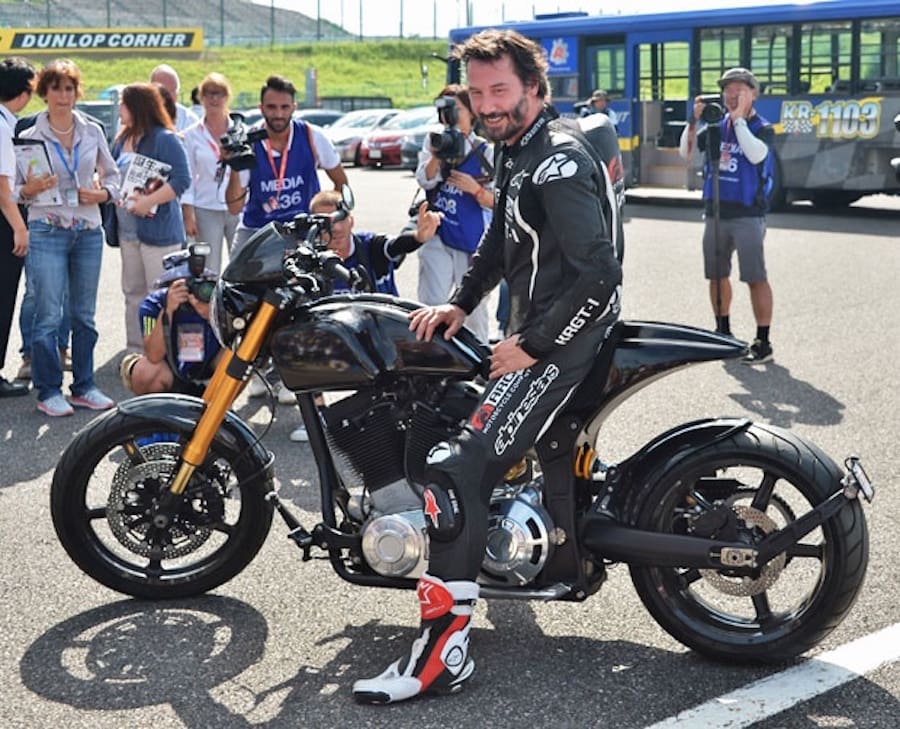
AC: Keanu, is it true you like riding bikes so much that you only have a couple of cars that you hardly ever drive?
KR: Actually, I have just one car, a 2013 Porsche C4, but I’m on a motorcycle pretty much every day. The car just kind of sits there looking jealous! For me, motorcycles are my main transport, including when it rains. I actually like the occasional wet day – I think I’m one of the few people in LA who enjoys riding in the rain! But since Arch Motorcycles products only have room for one, if it’s raining and I’m tak-ing a friend, then we take the car. Otherwise, I’m lucky that I get to ride something nearly every day that I helped make happen.
AC: How did your passion for bikes get started?
KR: I was 22 and doing a picture in Munich, and this young girl at the sound stages had an enduro bike. I asked her if I could ride it and she coached me in doing so. When I got back to Los Angeles, I bought a KLR600. I rode that for a little bit, and then I got my first Norton.
AC: I hear you’re a Norton fan?
KR: I am, yes – I have four Nortons, all Commandos. I love the shape of them, the upswept pipes, and even the smell of them and how they ride. I’ve still got the first Norton I bought, a ‘73 850 Roadster I got in 1987, plus an Interstate, a Fastback, and a ‘72 Combat Commando with Dunstall pipes I got in 1989. The Interstate has a big tank, Axtell cams, I raised the compression a little bit, and put rearsets on it, with Koni shocks and heavier fork springs. And then the Fastback’s a bit of a mule – it has a ’68-’72 engine off a racebike.
AC: Do you have one of the new 961 Nortons, too?
KR: We actually just went to the Norton factory and hung out with Simon Skinner, the designer – Stuart [Garner] the owner was away. They were really gracious in taking the time to show us around, and tell us what they hope to do. They let us ride the bikes, so I rode a new Dominator, which is pretty neat. Certainly, the way how Norton have come around to make something pretty special and cool is an inspiration to us in relation to Arch Motorcycles. I guess they’ve got almost a hundred years on us as a brand, and hopefully one day we’ll have that kind of legacy. Anyway, that’s what we’re hoping to do! For the past two years, Gard and I have been making this motorcycling and manufacturing tour of the world; to try to meet other engineers, designers, creators of motorcycles, and take a look at other areas of biking. We’ve been to Italy and met with Ducati, Ferrari, Bimota and Vyrus, and now Norton here in England.
AC: So how did you become a motorcycle manufacturer yourself? Why start Arch Motorcycles?
KR: For myself, I guess you have to start with a dream, and the desire to do something with it. I had a [Harley] Dyna I was half-finished customising, and I went to see Gard here about making a throne seat and a cissy bar for it, but once I saw what he was doing, I asked him to make me a Custom bike. He built the prototype, I rode it, and it was amazing. It fits how I like to ride – I like being able to cruise, but then I also like the curves. When he’d finished it I kept going – wow, that bike needs to be out there in the world. The way the machine rode was something I’d never experienced. A forward control big V-twin that handled that way was something really special. But with the right gearing and right mapping, it’ll happily do 140mph.
AC: The ultimate street rod?
KR: I wouldn’t say that – for me when I think of other machines that I would put it in the category of in terms of the riding experience and what it does, I’d say it’s closer to an older air-cooled Porsche. There’s some other bikes that have elements of it, like the Ducati Diavel, but that’s not got an American V-twin motor – it’s a whole different beast! You’ve got a big V-twin with a lot of torque, and a really performance orientated experience in that it handles, turns in, and holds a line. It’s got a long wheelbase but it’s very stiff. It’s very comfortable for cruising, but when you get into the corners – you’re not going to rub your elbows, but it’s got a 240 rear tyre, and you can use all of it!
AC: So having ridden this motorcycle, what happened next?
KR: So I asked Gard if he wanted to start a motorcycle company with the two of us together to build this bike, so other people can have the same experience I did. Gard and I got to know each other well over the years while he was developing the prototype, and we really have a common aesthetic and sense of humour. So I told him, I have this idea of starting a motorcycle company – which looking back was pretty weird. I mean, why would I ask him if he wanted to start a motorcycle company when he already had LA Choprods, and still does!
AC: Well, from what I hear he took some persuading?!
Gard: I said no a lot. I like to say no a lot!
KR: Well, that’s true, he said no a lot – but eventually for whatever reason the no became a definite yes.
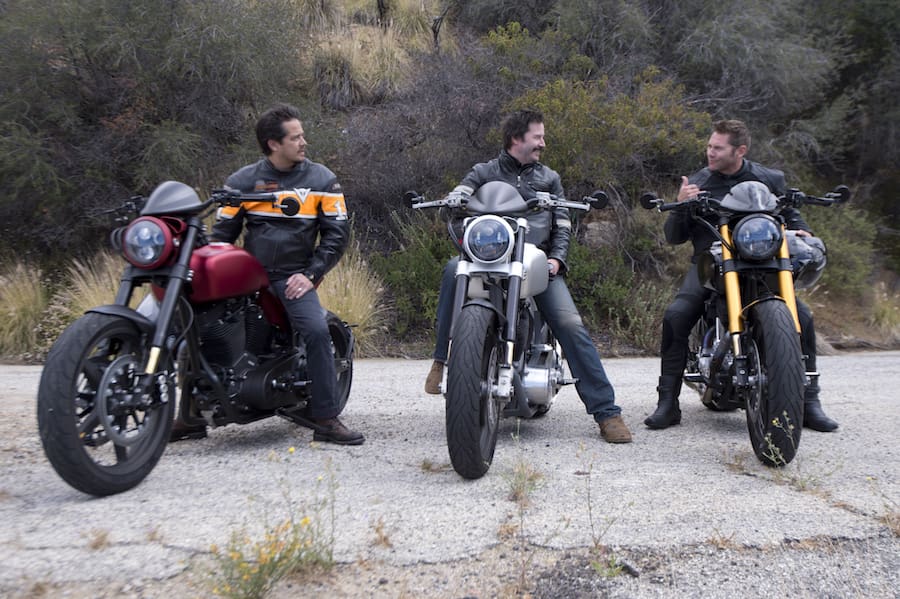
AC: How long ago was that?
KR: End of 2011. So we started up Arch Motorcycles and found a factory. We don’t make everything ourselves – our engine comes from S&S, our transmission comes from Baker, our suspension comes from Öhlins, and they all do something a little different for us. But there’s over two hundred parts in the motorcycle that we build in-house for it.
AC: So together you’ve created this motorcycle which I can confirm is really fun to ride. Did it turn out as you expected?
KR: If you mean riding, yes. We wanted it to be a rider, not just a bar-hopper you can profile on. One of the things with a Custom motorcycle is they don’t lean, they don’t turn in, they don’t feel confidence in-spiring, nor dependable. And for me I remember this from the very beginning – I wanted a cool-looking Custom motorcycle that you can really ride hard on – and on ours you can, you really can, you experi-enced it for yourself. I wish I’d been there with you. How did you like our torque?
AC: Fantastic – a three speed gearbox would be enough! So how many bikes has Arch sold so far?
Gard: We just built number 19, and we have two more in the queue, so hopefully this year we will sell 25 motorcycles at $78,000 each. In the beginning, the goal was maybe fifty or sixty bikes a year, with a maximum of a hundred. This year, I think we’ll do twenty-five or thirty, all individualised for the customer.
AC: But one of the three bikes you have here at the Festival of Speed is called the Goodwood Exper-imental – what is that, exactly?
KR: This is a prototype for a little more sportier a bike that we hope to introduce at the EICMA Milan Show in November, which will be limited to 10 motorcycles powered by a new big engine that S&S are working on – it’ll be bigger than the 124ci motor that we have now. We’re working on second generation models already, plus some adaptations to this present model. We’re learning all the time, and putting what we’re learning back into the motorcycle. That’s part of the fun of it; it’s a creative act as well as a business. It has to work as both.
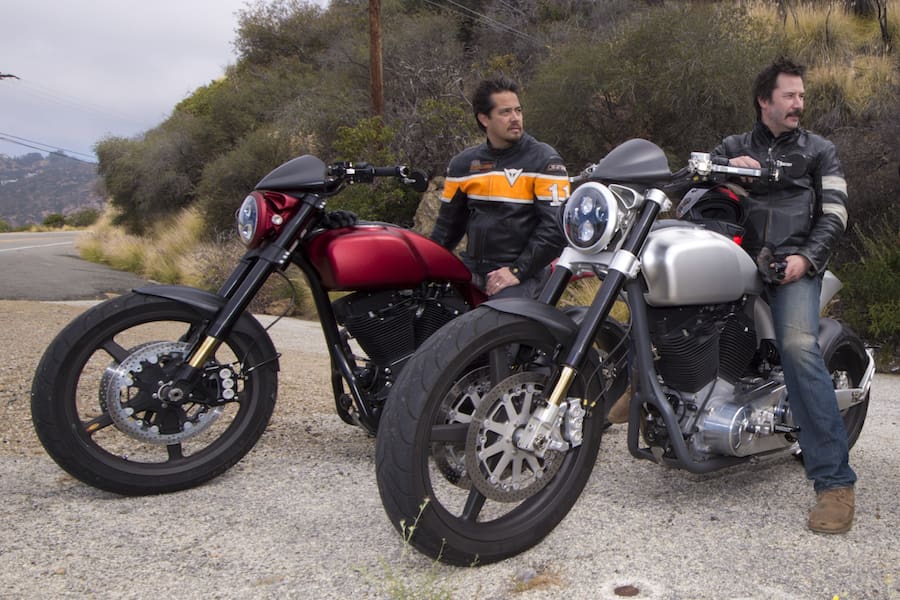
AC: Will that new bike have an S&S X-Wedge motor, as compared to the Twincam engine you have now?
KR: No, it’s still a Twincam, but the frame is custom, and it’s all billet aluminium everything. It’s a produc-tion bike, but like the KRGT-1 it’ll also be Custom in the way we fit the motorcycle to you the owner. It’s tailored to you like a bespoke suit. Our target audience is very small – we understand that it’s a very expensive motorcycle. Our future customers come to our facility, get fitted to the bike, and see how it’s built. It’s a production motorcycle, but it’s custom fitted for them – we do custom finishes, custom ergonomics, let them pick their own colours, fit the seat to them, and hopefully start a relationship with the customer too. It’s built out of a passion for riding, though, the passion for being on a bike, the love of the aesthetics of a motorcycle. It’s a production Custom bike that’s highly bespoke. There are other people out there that do that same thing – Porsche, Lamborghini, Ferrari, Bugatti – that whole idea of customising a family of models comes from the car world, but we’re certainly in that tradition.
AC: Where do you go from here? Are you only going to make this kind of motorcycle, or will you branch out to make something different?
Gard: I think it’s good to stay open minded, We had a nice visit with Norton, and we saw this new V4 1200 engine they’re working on, which might give us some inspiration. I think this idea of every year do-ing just ten examples of something pretty special is something we’ll look at doing. We’ll always have a KRGT-1 in our lineup, but maybe each year we’ll do something pretty exotic, and just hold it down to ten examples of each.
AC: Keanu, are you enjoying being a motorcycle manufacturer?
KR: I am – very much indeed. I like telling stories, or being part of a story. It helps in acting, you’re telling a story, creating something – so I feel really honoured and privileged to be working with Gard on telling the story of this dream. Hopefully people will love it.
TEST ALAN CATHCART
PHOTOGRAPHY KEVIN WING
